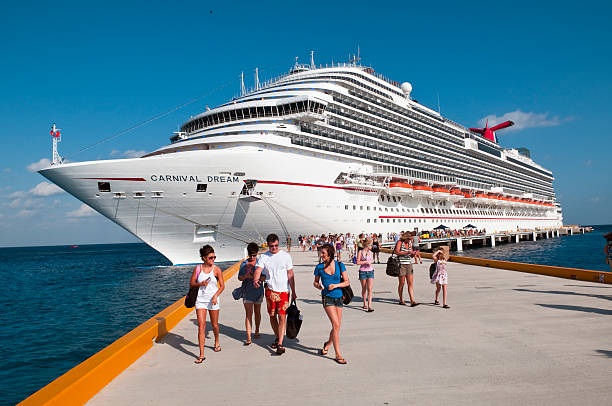The Mirror's Health , Lifestyle and Fashion

Cruise Tourism
World and sea cruises normally use large ships, which may not be affordable for you as a small and medium-sized enterprise. In addition, most large cruise ships are not environmentally sustainable at all. As the demand for sustainable tourism increases, small sea and river cruises, which contribute to local communities, become more appealing for small and medium-sized tourism operators.
Advertisement
Cruise Ships are large passenger ships used mainly for vacationing. Unlike ocean liners, which are used for transport, cruise ships typically embark on round-trip voyages to various ports-of-call, where passengers may go on tours known as "shore excursions". On "cruises to nowhere" or "nowhere voyages", cruise ships make two-to three-night round trips without visiting any ports-of-call.
As of December 2018, there were 314 cruise ships operating worldwide, with a combined capacity of 537,000 passengers. Cruising has become a major part of the tourism industry, with an estimated market of $29.4 billion per year.
Cruise tourism involves an all-inclusive holiday on a cruise ship for at least 48 hours, whereby the ship calls at several ports or cities on a specific itinerary. It is a tourism product that offers and combines attractions, activities, access, accommodation and amenities. The nature of cruise ships makes them destinations in themselves, where features and amenities are comparable or even superior to resorts on land.
Modern cruise ships tend to have less hull strength, speed and agility compared to ocean liners. However, they have added amenities to cater to water tourists, with recent vessels being described as "balcony-laden floating condominiums".
Cruise tourism comprises a variety of different types of cruises, varying in duration and destinations. River, niche, world cruise, theme cruises, expedition cruises, etc. The cruise industry is one of the largest growing sectors in the tourism industry.
Europe is the leading market for cruise and, after North America, is also the second-largest cruise market in the world. The passenger volume of cruises leaving from European ports increased from 6.1 million to 7.2 million between 2012 and 2018. The global cruise tourism market is expected to grow incrementally between 2018 and 2022 by 6%.
The growth projections have been challenged by the impact of COVID-19. The truth is that the pandemic itself has damaged the reputation of the industry and resulted in significant revenue loss (such as paying out cancellation fees, reimbursement of tickets, costs associated with ships docking at various ports). The financial impacts are significant and may lead to the closure of numerous cruise companies.
The ones that are able to survive will need to comply with even more rules and regulations than before. The extension of existing sanitation standards and more strict enforcement of rules and regulations can be expected. Restoring confidence is a major priority. Therefore, transparent and visible procedures are needed. This means that the industry needs to prepare for higher risk management costs and more service restrictions.
To keep people interested, cruise lines have been expanding their menu of activities and ship amenities. They developed activities for all ages and interests, ranging from cooking to financial management. While most people taking cruises tend to be older, companies are increasingly targeting families, with Disney cruises being particularly child friendly. Companies have also developed themed cruises like all-kosher luxury cruises, cruises with "jam bands" and various classic rock themes, and even Star Trek and SciFi themed cruises.
Since 1970, the industry has experienced growth in the number of people taking trips, as well as increased capacity. But this industry, much like airlines, can be heavily dependent on world events and the world economy. Issues related to occupancy/passenger limits, passenger hesitation, vaccination rates, etc. will continue. The long term nature of the pandemic has also provided cruise destinations time to really consider the positive and negative impacts the industry has on their communities, with some choosing to limit or redefine the relationship between them and the industry.




